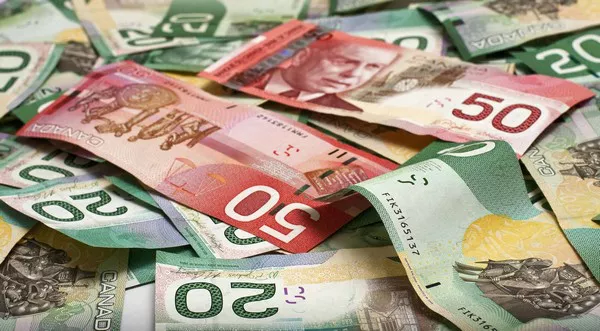The Canadian dollar, denoted by the symbol CAD or commonly referred to as the “loonie,” is a prominent currency in the global financial landscape. Like all currencies, the Canadian dollar experiences fluctuations in value against other currencies, driven by a multitude of economic, political, and market factors. In this comprehensive article, we will delve into the intricacies of what causes the Canadian dollar to rise and fall, examining key drivers and their implications for the currency’s valuation.
1. Economic Fundamentals:
Interest Rates:
Interest rates set by the Bank of Canada (BoC), the country’s central bank, play a crucial role in influencing the value of the Canadian dollar. Higher interest rates tend to attract foreign investors seeking higher returns on their investments, leading to increased demand for the Canadian dollar. Conversely, lower interest rates may dampen investor interest, resulting in a decline in the currency’s value. The BoC’s monetary policy decisions regarding interest rates are closely monitored by market participants and can have significant implications for the Canadian dollar’s exchange rate.
Economic Performance:
The overall health and performance of the Canadian economy exert a significant influence on the value of its currency. Key economic indicators such as GDP growth, employment rates, inflation levels, and trade balances provide insights into the country’s economic fundamentals. Positive economic data, such as robust GDP growth or declining unemployment rates, can bolster investor confidence in the Canadian dollar, leading to appreciation. Conversely, economic downturns or negative data releases may trigger depreciation as investors adjust their expectations regarding future economic prospects.
2. Trade Dynamics:
Commodity Prices:
Canada is a major exporter of commodities such as oil, natural gas, metals, and agricultural products. Consequently, fluctuations in commodity prices, particularly crude oil prices, can have a significant impact on the Canadian dollar’s value. As a commodity currency, the loonie is closely correlated with movements in commodity markets. Rising commodity prices generally benefit the Canadian dollar, as increased export revenues contribute to a stronger trade balance and heightened demand for the currency. Conversely, declining commodity prices may exert downward pressure on the Canadian dollar, reflecting reduced export earnings and economic uncertainty.
Trade Relations:
Canada’s trade relations and international trade dynamics also influence the value of its currency. Trade agreements, tariffs, and geopolitical developments can impact trade flows and market sentiment towards the Canadian dollar. Positive developments, such as the signing of trade agreements or increased trade activity with key trading partners, may bolster confidence in the currency. Conversely, trade disputes, protectionist measures, or geopolitical tensions can undermine investor sentiment and lead to currency depreciation.
3. Monetary Policy and Central Bank Actions:
Central Bank Interventions:
The Bank of Canada occasionally intervenes in the foreign exchange market to influence the value of the Canadian dollar, particularly during periods of excessive volatility or when deemed necessary to achieve specific policy objectives. Central bank interventions may involve buying or selling Canadian dollars to stabilize exchange rates or address imbalances in the currency market. Market participants closely monitor central bank actions and statements for signals regarding future monetary policy decisions and exchange rate management strategies.
Quantitative Easing and Stimulus Measures:
In response to economic challenges or financial crises, central banks may implement quantitative easing (QE) or stimulus measures to support economic recovery and financial stability. These unconventional monetary policy tools can impact currency values by influencing interest rates, inflation expectations, and investor sentiment. The implementation of QE or stimulus measures by the Bank of Canada may lead to currency depreciation if perceived as diluting the currency’s value through increased money supply or inflationary pressures.
4. Global Market Dynamics:
Risk Sentiment and Market Volatility:
The Canadian dollar is sensitive to changes in global risk sentiment and market volatility. During periods of heightened uncertainty or risk aversion, investors may seek safe-haven assets such as the US dollar or Japanese yen, leading to a decline in demand for riskier assets like the Canadian dollar. Conversely, improved risk appetite and declining volatility may benefit the loonie as investors allocate capital to higher-yielding and riskier assets, including currencies like the Canadian dollar.
US Dollar Dynamics:
The relationship between the Canadian dollar and its US counterpart, the US dollar (USD), is particularly noteworthy given the close economic ties between Canada and the United States. Movements in the US dollar, driven by factors such as US economic data releases, Federal Reserve policy decisions, and geopolitical events, can influence the Canadian dollar’s value. A strengthening US dollar relative to the Canadian dollar may lead to depreciation of the loonie, while a weakening US dollar could result in appreciation.
See Also: How & Why Oil Impacts the Canadian Dollar?
Conclusion:
The fluctuations in the value of the Canadian dollar are shaped by a complex interplay of economic, political, and market factors, reflecting the dynamic nature of the global currency market. Understanding the key drivers behind the rise and fall of the loonie is essential for investors, businesses, and policymakers seeking to navigate the complexities of currency markets and manage currency-related risks effectively. By monitoring economic indicators, trade dynamics, central bank actions, and global market trends, market participants can make informed decisions and capitalize on opportunities in the ever-evolving landscape of foreign exchange.


